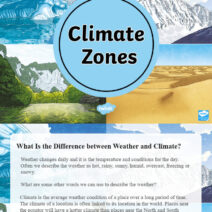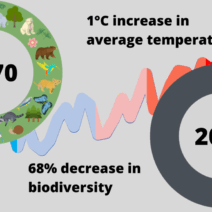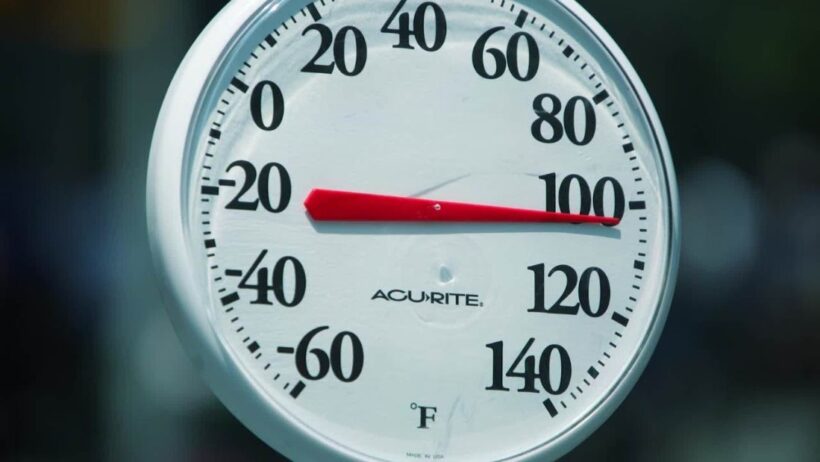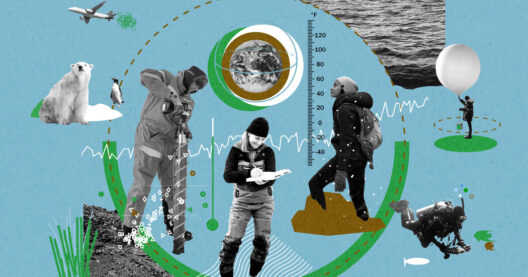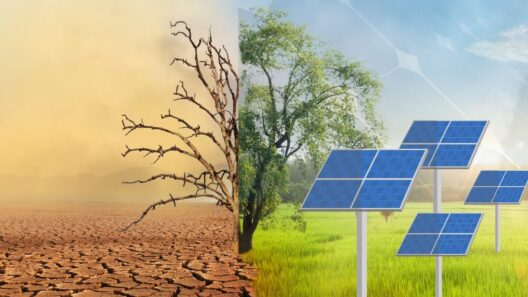Climate change is a topic that elicits a wide array of opinions and emotions. From artificial weather patterns to the more tangible occurrences of erratic natural disasters, the observable phenomena have prompted a pointed debate among scientists, policymakers, and the general public. But is climate change, in fact, happening as many assert? The resounding answer from the scientific community is an emphatic “yes.” This comprehensive exploration delves into the compelling evidence, underlying mechanisms, and broader implications of climate change.
Firstly, let’s begin with the most salient indicators: rising global temperatures. The last century has witnessed an alarming increase in average surface temperatures, with the past decade being the warmest on record. Data compiled from various meteorological organizations and scientific studies confirm this unequivocal trend. Global temperatures have surged by approximately 1.1 degrees Celsius since the late 19th century, chiefly due to anthropogenic activities. Such a temperature increase, while seemingly modest, carries profound implications for ecosystems, marine habitats, and the human population.
The intricate relationship between carbon dioxide (CO2) emissions and global warming cannot be overstated. Human activities, primarily the combustion of fossil fuels for energy, transportation, and industrial processes, have led to a monumental rise in CO2 concentrations in the atmosphere. Since the beginning of the Industrial Revolution, atmospheric CO2 levels have increased from about 280 parts per million (ppm) to over 410 ppm. This surge has significantly enhanced the greenhouse effect, trapping heat in the atmosphere and contributing to the phenomenon known as global warming.
In addition to rising temperatures, glacial retreat serves as a poignant visual testament to climate change. Glaciers, once considered permanent fixtures of our planet, are now receding at an unprecedented rate. The Polar Regions, particularly Greenland and Antarctica, are experiencing drastic ice loss, leading to rising sea levels. The Intergovernmental Panel on Climate Change (IPCC) predicts that, if current trends persist, sea levels could rise by over 1 meter by the end of this century. This escalation poses a dire risk to coastal cities and low-lying regions around the globe, where millions of inhabitants face existential threats.
Furthermore, the increasing frequency and intensity of extreme weather events cannot be ignored. Climate change has been directly linked to the amplification of hurricanes, droughts, floods, and wildfires. For instance, the Atlantic hurricane season has seen a notable uptick in both the number and severity of storms, wreaking havoc on communities and infrastructure alike. This escalation compels us to reconsider our relationship with the natural world, emphasizing the importance of sustainable practices and conservation measures.
Another dimension of this crisis is its impact on biodiversity. As temperatures rise and ecosystems shift, many species are struggling to adapt—or facing extinction. Coral reefs, often dubbed the “rainforests of the sea,” are particularly vulnerable due to ocean acidification and rising temperatures. The loss of biodiversity has cascading effects on food webs and ecosystem services, jeopardizing the delicate balance of our planet’s habitats. This subject warrants critical attention, as the alarm bells for biodiversity loss resonate across numerous scientific inquiries.
Moreover, climate change intersects intricately with socio-economic factors. Vulnerable populations, particularly in developing nations, are disproportionately affected. These communities often lack the resources and infrastructure to respond effectively to climate-related challenges, exacerbating existing inequalities. Migration patterns are shifting as those in vulnerable regions seek refuge from environmental catastrophes, posing both humanitarian and geopolitical concerns. As climate-induced displacement becomes increasingly prevalent, the nexus between climate change and human rights must be rigorously examined.
Concerning the public discourse around climate change, skepticism often arises from the conflation of scientific evidence with individual beliefs or political ideologies. Nonetheless, it’s imperative to recognize that the scientific consensus surrounding climate change is robust. Organizations ranging from NASA to the National Oceanic and Atmospheric Administration (NOAA) reaffirm that climate change is not merely a theoretical concept but a pressing reality substantiated by empirical data.
In light of these compelling assertions, the call for action has never been more urgent. Mitigation strategies must be paramount, focusing on reducing greenhouse gas emissions through innovative technologies, renewable energy sources, and policy reforms. Transitioning to clean energy not only addresses climate change but fosters economic growth and job creation within sustainable sectors.
Adaptation strategies are equally crucial. Building resilient infrastructure, protecting coastal wetlands, and enhancing resource management are steps that can mitigate the impacts of climate change. The emphasis must be placed on collaboration among governments, corporations, and communities to cultivate a comprehensive approach toward combating climate change.
In conclusion, the evidence surrounding climate change is irrefutable. Rising temperatures, glacial retreat, extreme weather events, and biodiversity loss all serve as stark reminders of the urgent need for collective action. The fascination with climate change transcends mere observation; it beckons us to consider deeper implications for societal structures, environmental ethics, and global stewardship. Understanding the science behind climate change is vital, inspiring individuals and communities to advocate for sustainable practices and policies that ensure a livable planet for generations to come.
